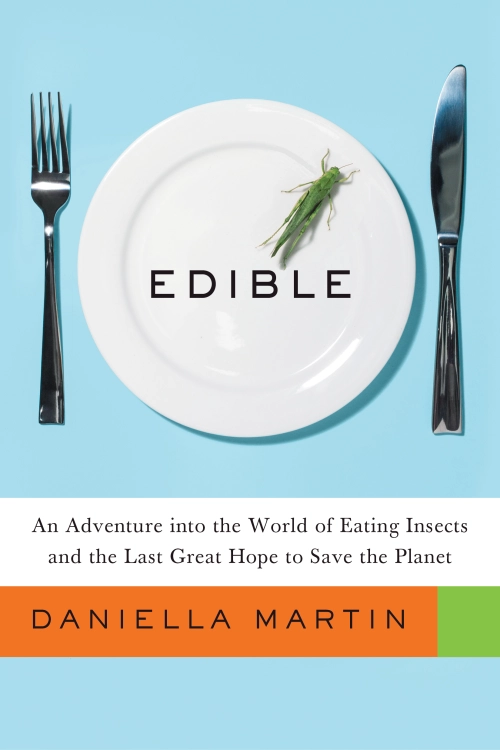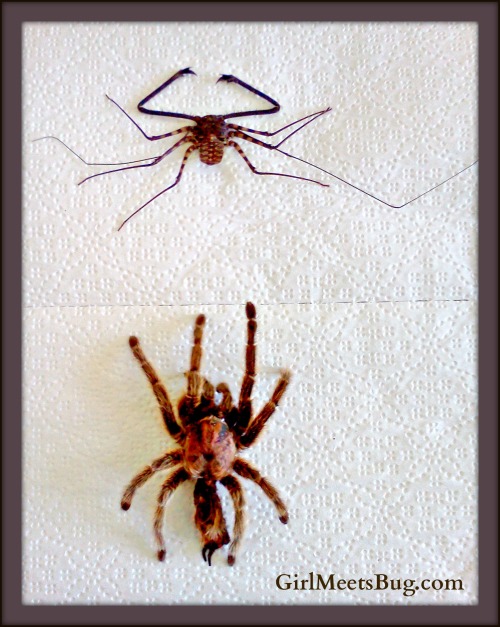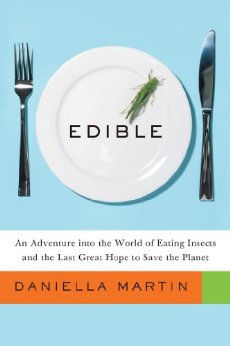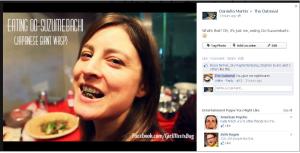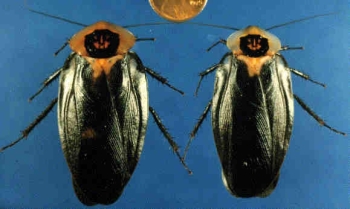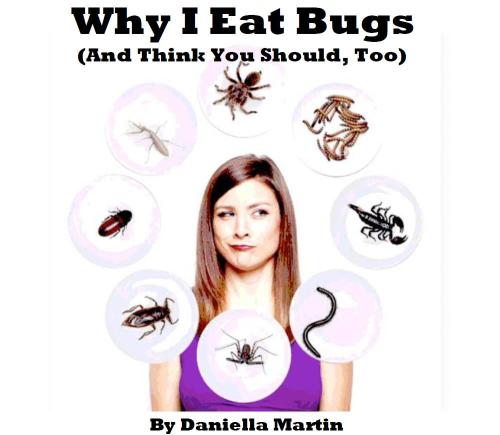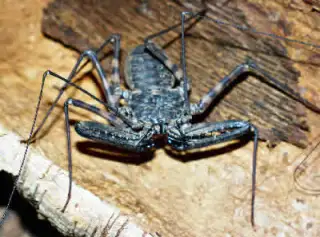
Damon variegatusPhoto © Animal-World: Courtesy Russ Gurley
You would have bought tickets to see the show in my living room last night. During a long, hot, dusty hike, Brian and I each caught a small grasshopper, intended to feed the two arachnid residents of our home: Caliope, the tarantula, and Freddy, the tailless whip scorpion, AKA cave spider.
Caliope is the good eater in the family, gobbling down almost anything we drop into her enclosure: crickets, mealworms, waxworms, small spiders we find around the house, garden pests like caterpillars. Usually her meals come from the live insects I order for my own cooking projects. Once, I fed her a few waxworms, fresh from the farm. I expected her to eat them one at a time, but she greedily stuffed all of them into her mouth at once, and walked around with the white, sausage-like bodies protruding out of her mouth like a dog with three bones. The one time a caterpillar got away from her, it built a chrysalis in the upper corner of her terrarium. When it hatched, she consumed the beautiful, pale green cabbage moth butterfly with gusto.
Freddy, on the other hand, is not such a great eater. He’s very sensitive to temperature and humidity, and if conditions are not just right, he’ll turn up his chelicerae at even the juiciest, most defenseless prey we give him. I’ve watched fat larvae crawl right over his face, only to be staunchly ignored. In fact, since I’d never seen him do it, and had found plenty of carcasses in his cage, I wasn’t entirely sure he’d ever eaten in the entire year we’d known each other.
Yesterday’s conditions were perfect. It was very warm, so I’d been misting Freddy more often than normal. Caliope, of course, pounced on her present instantly, dragging it back into her cave to devour. Freddy ignored his grasshopper as usual, so I decided to take matters into my own hands.
Reaching down into his tank, I gently nudged the grasshopper into Freddy’s archway. Cave spiders like to hang upside down, so he has a little tunnel to hang out in. I positioned myself with a head-on view of the tunnel: grasshopper in the foreground, Freddy above and to the right. Nothing happened.
I waited. More nothing.
Afraid Freddy might be out of practice, I tapped gently on the glass, in the general vicinity of the grasshopper, to make Freddy think, “Hey, maybe there’s some prey over there.”
Sure enough, Freddy’s whip, or antenniform leg, a long, tendriliferous sensing wand, began to move, exploring his surroundings. Freddy only has one whip, having lost the other before we met. It has two elbows, and the end of it can flex any which way, like a dancer’s wrist. He slowly began to wave the whip about, touching down occasionally on his archway, the ground, and reaching tentatively out into the air beyond the tunnel. If you’d been standing outside the archway, you’d have seen this long black tentacle meandering around, like the patrolling eye-stalks of the aliens in War of The Worlds. I felt a thrill of vicarious fear.
Freddy’s explorations were getting him nowhere near the grasshopper, which sat completely still at the bottom of his tunnel, so I kept up my minute tapping. Slowly, slowly, the amazingly flexible and yet precise tip of Freddy’s whip came closer to his/my target. It touched down here, behind the grasshopper; there, to the left of the grasshopper. I could feel my impatience, and the suspense building. Finally, the tip of Freddy’s long, long arm touched down on the grasshopper’s back.
The tip of the whip pulled back gently, almost thoughtfully, hanging suspended over the seemingly oblivious, yet frozen grasshopper. As if Freddy were processing and planning: “Was that food?” “How shall I proceed?”
The whip-tip came back, touching the grasshopper again. Then it pulled away, and came back down on the right side of the insect. Then the other side. The whip-tip seemed to be ever so delicately stroking the grasshopper, running over its topography, reading its dimensions and precise location. As it did so, Freddy’s body moved, almost imperceptibly, closer.
My heart caught in my throat. Was I finally going to get to see him in action? Was he going to eat?
Since Freddy was behind and to the upper right of the grasshopper, moving closer essentially meant sort of looming down above it. If this had been a scary movie, and the grasshopper the goat in Jurassic Park, or Ellen Ripley in Alien, you’d have been on the edge of your seat. Here, from the grasshopper’s perspective, was an enormous, black spider-scorpion, hanging down above you in a dark cave, with huge spiky claws and a long tentacle that was stroking the electrons of your back without you realizing it – mapping out where you were, inching silently, and with deadly aim, closer.
Freddy stroked the grasshopper, back and forth, back and forth, hovering forward. The grasshopper didn’t move a muscle. Then, suddenly, in the blink of an eye Freddy pounced, yanking the grasshopper to his mouth with his claws and biting in.
The grasshopper didn’t even have time to struggle before his life force was seeping out of him and into Freddy. They stayed like that in a mortal embrace for some time. At one point, the grasshopper’s leg stretched out, like a deliberate ballet stance, or a lover in an ecstatic splay of the big petit mort.
I guess the moral of the story is, why keep a goldfish when you can get a show like this?

